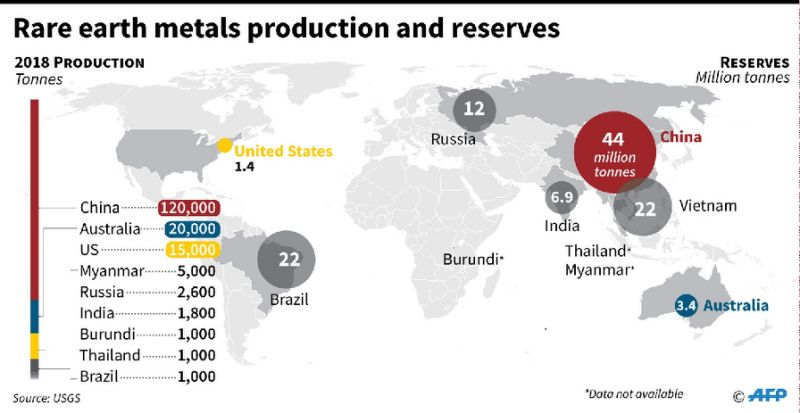-
26 Jun 2025
GS Paper 1
Geography
Day 10: Trace the global distribution of rare earth elements (REEs). Why do these minerals matter for the global green transition? (150 words)
Approach :
- Begin with a brief definition of Rare Earth Elements (REEs).
- Trace the global distribution of rare earth elements (REEs).
- Explain how these minerals matter for the global green transition.
- Conclude with some Indian initiatives in this sector.
Introduction:
Rare Earth Elements (REEs) refer to a group of 17 chemically similar elements, comprising the 15 lanthanides, plus scandium and yttrium. They are essential to modern technology and the clean energy revolution, making them strategically significant for the global green transition.
Body :
Global Distribution of REEs
- China:
- World's largest producer, accounting for over 60–70% of global output.
- Major deposits: Bayan Obo in Inner Mongolia.
- Controls the entire value chain—from mining to refining and magnet production.
- United States:
- Has significant reserves (~1.5 million tonnes).Bayan Obo in Inner Mongolia
- Mountain Pass mine in California is a major source.
- Australia:
- Home to the Mt. Weld mine, one of the richest REE deposits.
- The second largest producer globally (~10%).
- India:
- Ranks 5th globally in terms of REE reserves.
- Deposits mainly found in monazite sands along the eastern and southern coastal belts (e.g., Tamil Nadu, Odisha, Andhra Pradesh).
- Other countries:
- Russia, Brazil, Vietnam, Malaysia, and parts of Africa (e.g., Burundi and South Africa) are emerging players in REE exploration and production.
Importance of REEs in the Green Transition
- Renewable Energy:
- Neodymium and Dysprosium are vital for permanent magnets in wind turbines and electric vehicle motors.
- Electric Vehicles (EVs):
- Use of REEs in batteries, powertrains, and lightweight materials.
- Solar Panels & Lighting:
- Europium and Terbium are used in energy-efficient lighting and photovoltaic cells.
- Hydrogen Fuel Cells and Carbon Capture:
- Certain REEs are used in advanced catalytic and separation technologies.
Conclusion :
India, recognizing the strategic value of REEs, has launched initiatives like the Deep Ocean Mission, strengthened the role of IREL (India) Ltd, and encouraged public-private partnerships for indigenous exploration and processing. These steps aim to reduce import dependency and secure India’s place in the emerging green technology value chain.





